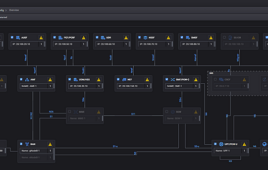Recent reports from both Ericsson and J.D. Power have indicated streaming and other network data delays are stressing out wireless customers and making them more prone to switch carriers.
According to Ericsson’s February 2016 Mobility Report, slow network connections that cause delays in loading web pages and videos lead to increased heart rates and stress levels for consumers.
The Ericsson ConsumerLab neuroscience study gauged the brain activity, eye movements and pulse of participants while they were exposed to varying degrees of delays ranging from no delays to a high degree of delays.

Credit: Ericsson Mobility Report, February 2016
Researchers found that both time-to-content and re-buffering caused stress for users. On average, the study recorded a 38 percent increase in participant heart rates when mobile content delays were present. But heart rates weren’t the only thing on the rise.
With no content delays, researchers found that consumers averaged a stress level 13 percent above the pre-task baseline. That stress figure, however, jumped three percentage points to 16 percent with just a medium content delay of two seconds.
When loading delays were compounded by a pause in content for re-buffering, stress levels shot up another 15 percentage points to 31 percent, the study found.
Additionally, Ericsson researchers found the cognitive load – or amount of information that a person is processing in the dorsolateral prefrontal cortex (DL-PFC) part of their brain – associated with mobile delays is comparable with watching a horror movie or solving a mathematical problem.
But J.D. Power’s 2016 U.S. Wireless Network Quality Performance Study shows users aren’t just stressed – they’re fed up.
Though the J.D. Power study found a lower incidence of customers reporting “slower than expected” data speeds on their 4G-enabled smartphones, those who do experience problems were found to be more inclined to switch carriers after fewer issues.
In J.D. Power’s 2014 U.S. Wireless Network Quality Performance Study customers who said they “definitely” would switch carriers within the year said they experienced slow connectivity issues during 28 out of 100 connections. This year, however, customers who said they were “definitely” planning to switch reported slow connectivity issues in only 22 out of 100 connections.
“It’s imperative for carriers to understand customer expectations and meet their rising need for data speed, while working hard to reduce the incidence of slow network connections,” said Kirk Parsons, senior director and technology, media & telecom practice leader at J.D. Power. “As the popularity of Web connections, video downloads and streaming grows, networks are handling more and more traffic each day. Wireless carriers must continue to invest in and improve network quality performance to meet customer expectations and keep them as customers for the long haul.”




